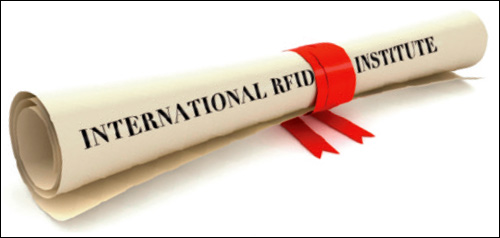Jan 06, 2015The year began with an announcement from Kohl's, a leading U.S. department store chain, that it was using radio frequency identification to manage inventory of footwear, denim and men's basics across all its stores and distribution centers. New RFID apparel retail deployments are being announced monthly, indicating that the sector is moving toward a tipping point.
While the pace of deployments is accelerating, how long will it take for apparel retail to reach critical mass? It's difficult to say. The following five conditions must be met for a new technology to reach mass adoption, according to Geoffrey Moore's well-established technology adoption life-cycle model:
1. A global technology standard
2. A problem no other technology can solve
3. The "whole" product
4. A technology "gorilla"
5. And a critical mass of users
In retail apparel, there is consensus that passive ultrahigh-frequency RFID based on the EPC Gen 2 standard is the technology to employ. No other technology can cost-effectively solve the problem of inaccurate and poorly maintained inventory. There is not yet a "whole product," at least in the way Moore means. You can buy tags, readers and software from one or more vendors, but each deployment is still customized.
One company has not emerged as a "gorilla," Moore's term for a dominant player. Checkpoint Systems, Tyco Retail Solutions, Xterprise/SML and several other RFID providers are each winning some projects. Over time, retailers will likely embrace one solution over the others and the vendor of that solution will emerge as the gorilla, with the largest market share.
Known Unknowns
Each new customer win by an RFID provider takes that company closer to gorilla status and the market closer to critical mass. But there are still some "known unknowns"—that is, information we know we don't know that is needed to predict when critical mass might be reached.
We don't know how long it will take retailers currently using RFID to tag 100 percent of all apparel, and we don't know how long it will take suppliers to begin tagging at the source. Both scenarios are critical for large-scale adoption of RFID. The faster retailers bring their suppliers on board, the more likely suppliers will integrate RFID into their manufacturing operations and tag all items for all retailers. Once suppliers are tagging all their products at the source of production, retailers not using RFID have an incentive to install readers and use the tags for their own benefit.
We don't know how many retailers are already using RFID in their operations and have not publicly announced their projects or future plans. RFID Journal is aware of several major retail chains worldwide that have rollouts well under way but will not confirm this information for the record. There could be many other retail projects going on under the radar, which would mean we are closer to critical mass than anyone realizes.

We don't know how long it will take for retailers just beginning down the RFID path to deploy the technology. Early adopters, such as Macy's and Bloomingdale's, took five or six years from initial pilots to large-scale rollouts. Kohl's went from no RFID projects to a chainwide rollout in just two years. Retailers new to RFID will benefit from the learnings of early adopters and will be able to roll out quickly, but no one knows exactly how fast.
Unknown Unknowns
There are also unknown unknowns, as former U.S. Secretary of Defense Donald Rumsfeld called them: Things we don't know we don't know. There could be unexpected events—the introduction of new RFID readers that dramatically reduce deployment costs, for instance, or a major announcement from a new retailer or pressure from institutional investors to adopt RFID—that could propel adoption forward. There also could be a lawsuit or other unexpected event that has a chilling affect on the technology's adoption.
RFID Journal believes the pace of adoption will continue to accelerate, with more apparel retailers adopting RFID in 2015. And companies that have already rolled out the technology will expand aggressively. This year, Macy's said its RFID-enabled business lines saw a 10 percent improvement in year-over-year sales compared with lines that were not RFID-enabled. With that kind of benefit, retailers are going to work intensively to get RFID into as many departments as possible.
Certainly, some unforeseen event could impact apparel retail adoption—positively or negatively—during the next two years. Absent that, we believe the sector will reach a tipping point in 2017 or 2018, which will lead all midsize and large retail chains to adopt the technology. And from there it will spread rapidly to jewelry, sporting goods, home furnishing and other sectors.

